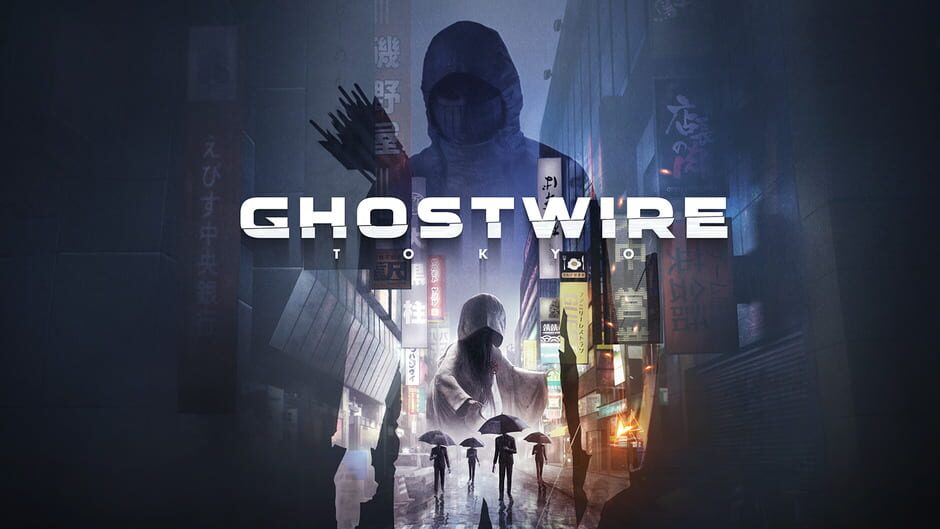It’s finally here. In a year which has already seen a handful of huge releases such as Horizon: Forbidden West, Dying Light 2 and the almost universally acclaimed Elden Ring, Ghostwire: Tokyo had some serious success to follow. As anybody who’s followed me on FG in the past few months can attest to, I’ve been steadily hyping more and more for Ghostwire’s release, despite the slew of other great titles we’ve been spoilt with.
Shinji Mikami – Ghostwire’s director – is considered the grandfather of survival horror by swathes of the community. Not surprising with a catalogue including Dino Crisis, Resident Evil and more recently, the Evil Within games. So, with his latest work, he’s naturally gone for a first-person perspective. The lead up to Ghostwire’s release with its vague and perplexing trailers only helped to gradually develop the intrigue, with the lack of detail of what the actual game would be almost reaching Hideo Kojima levels of mystery.
But alas, Ghostwire: Tokyo has arrived. It’s real and it exists at last for us to play. So does this descent into the ethereal reaches of Shibuya live up to the pre-release hype, or does it succumb to the spirits of evil?
Mystical Anime, Brought To Life
The world and narrative of Ghostwire: Tokyo are what stood out the most for me in the build up to its release, so it’s only appropriate to start here. Akito is the young protagonist who’s fate is rather unfortunate at the start of the game. However, Atiko is handily rescued and united with the untrustworthy and rather abrupt KK, a spirit who has decided to sit top-side within Akito’s body.
In terms of dynamic duo partnerships, they begin as we may expect when one invades the physical form of another. That is, rather unfriendly. KK is clear in his contempt for Akito’s views and motivations, determined to take from Akito what he needs, while Akito is forced to reluctantly accept KK’s aid to stave off the threats now surrounding him. I expected the relationship to remain pretty stagnant throughout the story, but I’m pleased to say that there’s substantial development in how the two men (one spectre?) start to perceive and interact with one another.
While their alliance starts off rocky, full of tension and power disputes, they slowly form into an unlikely partnership, before becoming real partners who look out for and respect each other. It culminates in a conclusion to the story which is satisfying for both personalities, each learning from the other and demonstrating a growth that never looked plausable from the off. The banter the two have, whether through off-hand remarks in the open world or through snippets in story dialogue add to the interpersonal development.
Akito is driven by the desire to find and rescue his sister, Mari, while KK is focused purely on the desire to overcome Ghostwire’s mystical adversary Hannya. Sporting an appropriately creepy mask, complete with ambiguous motivations and a seemingly all-powerful force of magic, he’s a daunting figure throughout Akito’s journey.
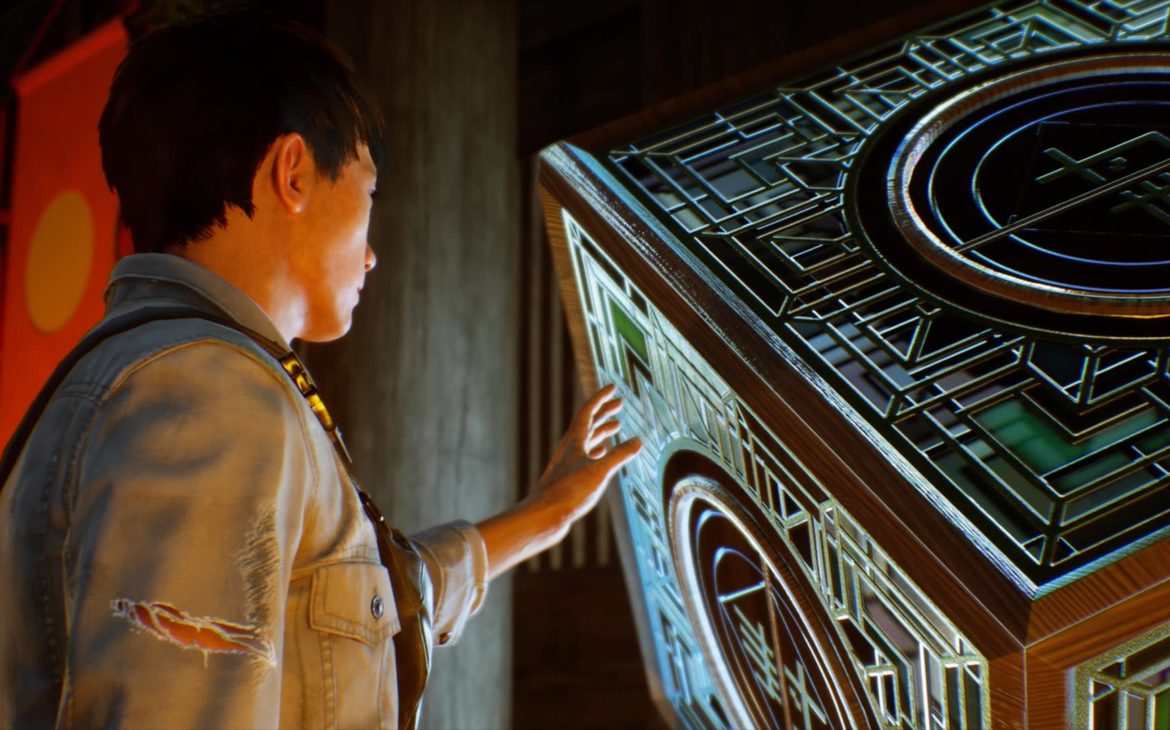
A Tale Of Fog, Foes and Freaky Things
See, Hannya arrives just as a paranormal force unleashes a wave of magical energy which results in the entire populace of Shibuya simply vanishing in place. Throughout your travels you’ll see remnants of the people left behind. Umbrellas, suitcases, clothing and everyday items litter the streets where people should have been before the event. In a moment, this once bustling city is degraded into a ghost town, devoid of the life and energy that preceded it.
In their place, Hannya and the Visitors set up shop and are clearly up to nefarious deeds. Naturally, given Akito’s lethal dilemma and KK’s penchant for revenge, we’re shoved onto the path of putting a stop to whatever mystical dealings he’s up to. Along the way you’ll meet a couple of KK’s former crew, as well as the lead gang of henchmen Hannya has by his side.
The story picks up pace immediately, with an abundance of cutscenes and exposition missions setting up all manner of story beats and relationships to keep track off. It tails off somewhat in the middle section, struggling with a sense of urgency when you’re messing about in the very distracting city of Shibuya. However, the ending really hits some heartfelt and emotional moments. The exploration of various people’s pasts and the tying up of plot points relating to both the protagonists and Hannya works surprisingly well.
Going into the final sequence, I’d liked what Ghostwire had done, but wasn’t especially blown away. I changed my mind after the final reveals, cutscenes and conclusions, as it concludes in an ultimately satisfying way, even bringing out some heart-wrenching feelings too. If you lose your way towards the middle, stick it out to the end, as when the pieces of the puzzle come together it’s a wonderful whole.
I should mention too, that all of Ghostwire’s dialogue is native Japanese with English subtitles (at least for me, I couldn’t find an option to change this anyway). As someone who doesn’t mind dub or sub, the voice acting seemed mostly on-point and the translation was never an issue. The writing is on the whole pretty good and serves the narrative well. Just be aware that you’ll be doing a lot of reading while playing, which can mean the odd line being missed in the heat of an intense battle.
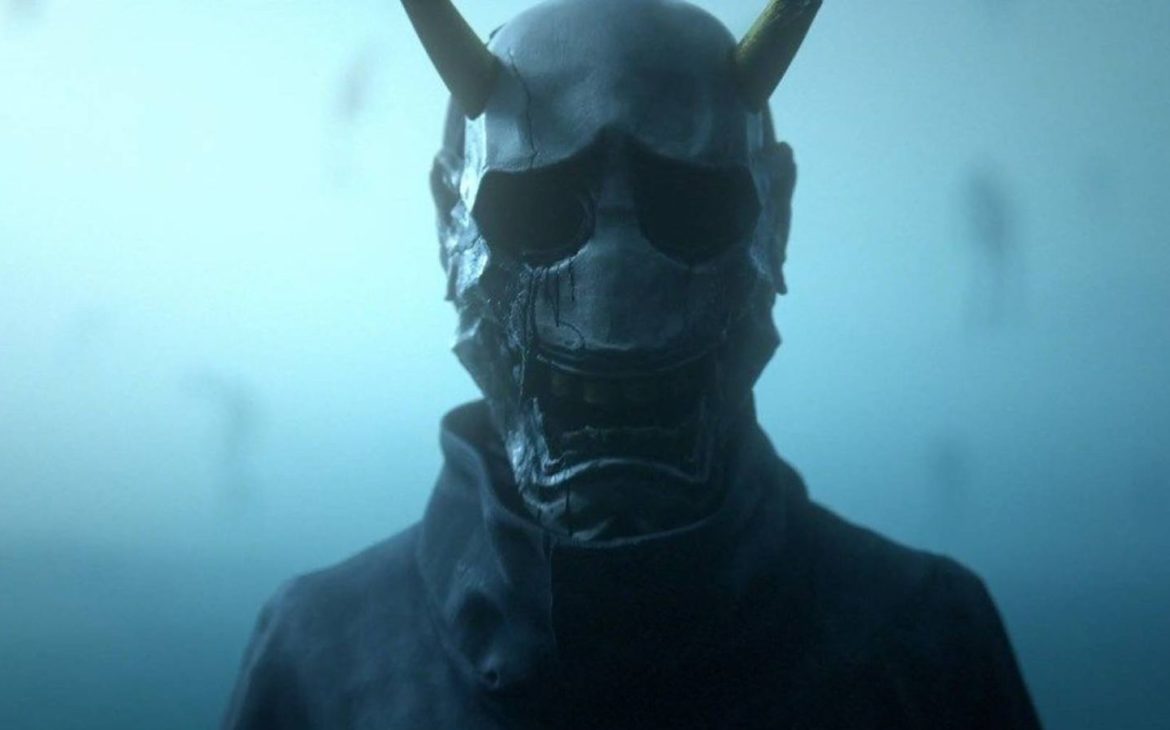
Exorcise Your Demons (Or Theirs!)
Make no mistake, despite the number of cutscenes, you’ll be doing a lot of fighting off the weird and wonderfully horrifying creatures that have now taken up residence in Shibuya. KK ain’t just a pretty face with the ability to possess bodies, he also has access to some pretty cool abilities through Ethereal Weaving.
Each power has it’s own strengths and weaknesses. Wind is your rapid-fire machine gun attached the ends of your fingers. Water acts as a makeshift shotgun and close-quarters management weapon. Fire meanwhile, is your weapon of pure destruction, perfect for dealing with groups or bringing the magical hammer punch down on troublesome spirits. You unlock each pretty quickly and you’ll have to learn swiftly how to navigate between them mid-combat to effectively hold off the hordes of the Visitors.
You can free-aim or use a semi-trackable lock-on system, but it’s not always perfect in terms of your ability to aim. I found it was easy to miss relatively straightforward shots and the lock-on was hit-or-miss in its effectiveness, but generally the system is satisfying and punchy. The oomph you’ll feel when you slice 4 spirits with a glide of your powered-up water blast, the audio feedback when the explosion of a fireball erupts on a group of enemies, it’s awesome stuff. The haptic and audio response to hits is great and underlines a solid combat system.
After enough damage, each enemy has their core exposed – think of a glowing weakspot akin to a heart, only more malicious. Once it’s exposed, you can either press your attack to fell them if you’re in the thick of a fight, or if you have time, you can hold L2 to lasso onto their cores, ripping and tearing in the most visually delightful flair that Doomguy himself would envy. This mechanic also rewards you with further energy to keep laying down the pain with your powers, as should you run out of energy for an element, it’ll be unusable until you gather some more. It sounds complicated, but it works the same as ammunition and functions just like a glory kill.
The wide variety of Visitor types you’ll encounter across the city help keep combat fresh. Chunkier, fatter opponents can weather more punishment before being staggered, while smaller, nimbler targets can rush you with lethal close-range assaults. Later on, enemies may teleport, have game-ending 2-hit combos or even be able to separate you from KK, leaving you vulnerable and meek as you run for your life to survive. I would have appreciated maybe one or two more power elements around the midway point to keep things from getting a little too routine, but the system here works great and has a punchy, fluid flow to it.
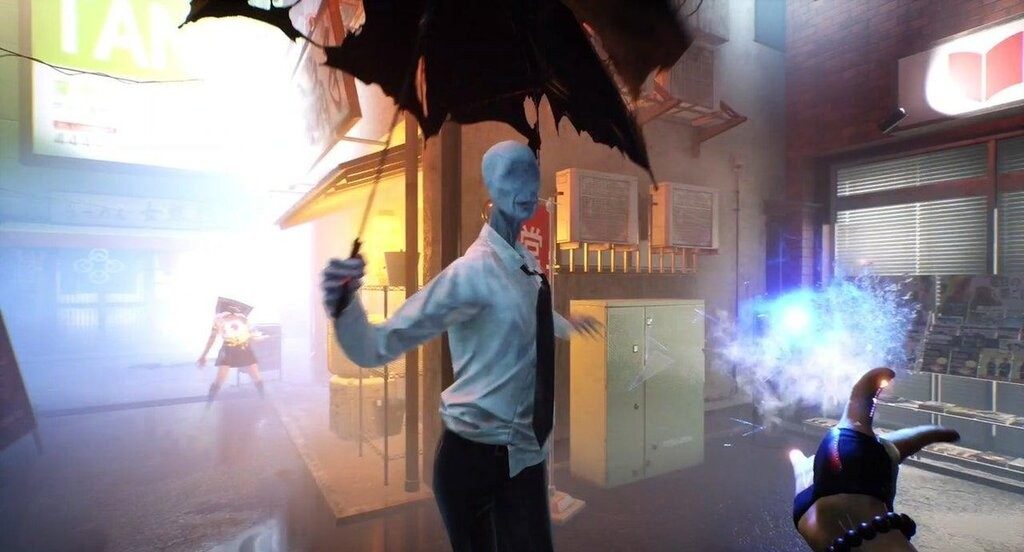
Detective Stealth
Yes, you read that last part right. At times, you and dear old spectral KK may become separated from one other. You may question in these dire occasions how exactly you can survive such an ordeal, as you lose access to Ethereal Weaving and Spectral Vision. Well, thankfully Akito is pretty adept with a supercharged bow – a weapon so strong it can put down virtually every enemy type with a couple of well placed headshots. Arrows are a limited resource that you have to scavenge or purchase, so pick your shots wisely.
A handful of encounters therefore necessitate stealth and depending on how you approach the open world, you’ll be doing a lot of skulking in the shadows. Stealth mechanics are… a mixed bag. Enemies had an almightily annoying knack of turning around just at the moment I was crouching towards them, even when they’d just reached their destination. Awareness detection also seemed off in places, with a headless girl spirit spotting me clean through a slab of geometry when I couldn’t see her.
Despite this, pulling up behind a foe to perform a Quick Purge (tearing out their core in style) was satisfying as all hell, when it worked. Later on you’ll also gain access to Talismans which have varying effects to make your life easier when creeping on enemies or facing them head-on. I won’t spoil their uses, but rest assured they are useful and amusing in equal measure. They’re expensive to replace too, so don’t go throwing them around wastefully.
Should your stealthy approach go awry, you can also rely on a block and perfect block mechanic common in most action games nowadays to keep you from too much harm. The response input is immediate and pulling off a perfect block to mitigate all damage and open a foe up for countering felt awesome. The timing feels intuitive and much easier to pull off consistently than for example Kena: Bridge of Spirits, but playing on normal you won’t need it all that much until later in the game.

Open Dimensions of Tokyo
Akito’s journey following the paranormal ravaging of Tokyo will require you to guide him through the land of Shibuya, as this is an open-world game, because everything is nowadays. While spanning a large map containing a self-sustained city, Shibuya isn’t by any means an imposingly large world to explore, which is, in my view, a good thing.
Ghostwire’s map is big enough to contain dozens of side-quests, hundreds of collectibles and thousands of spirits to be transported to the other side (literally). The difference though, is that all of this content is condensed into a smaller landmass, meaning less busywork and running around large swathes of nothingness that have personified other open world titles.
There are no transport vehicles, you run or walk across every inch of this map as you expand it by cleansing Torii gates, usually guarded by Visitor presence in gradually increasing numbers and difficulty. Each gate cleansed clears the surrounding fog by a sizeable chunk, unlocking new side missions and collectibles to be discovered. It’s basically the same as towers in Far Cry or viewpoints from Assassin’s Creed.
I appreciated the smaller, more condensed nature of Ghostwire’s map, but it comes with a couple of concessions. One is that if you’re looking for a 60 hour behemoth, you aren’t finding it here. Second is that the way you progress through Shibuya is incredibly linear despite the apparent openness of the world. Available Torii gates to cleanse only become accessible after progressing story missions, meaning there’s little to no room for actually venturing out in a direction and finding something organically. You’re effectively rail-roaded into a single path, with minor deviation if you feel like it, which makes it feel more like a big series of levels with some side-content attached, instead of a truly open-world feel.
It never soured my experience. On the contrary, I really loved the small pockets of contained content you’re slowly dolled out as you progress, but it was disheartening to constantly reach the edge of my allocated “fun space” before being funneled back onto where I’m meant to be by a fog that outright kills you if you linger in it too long.
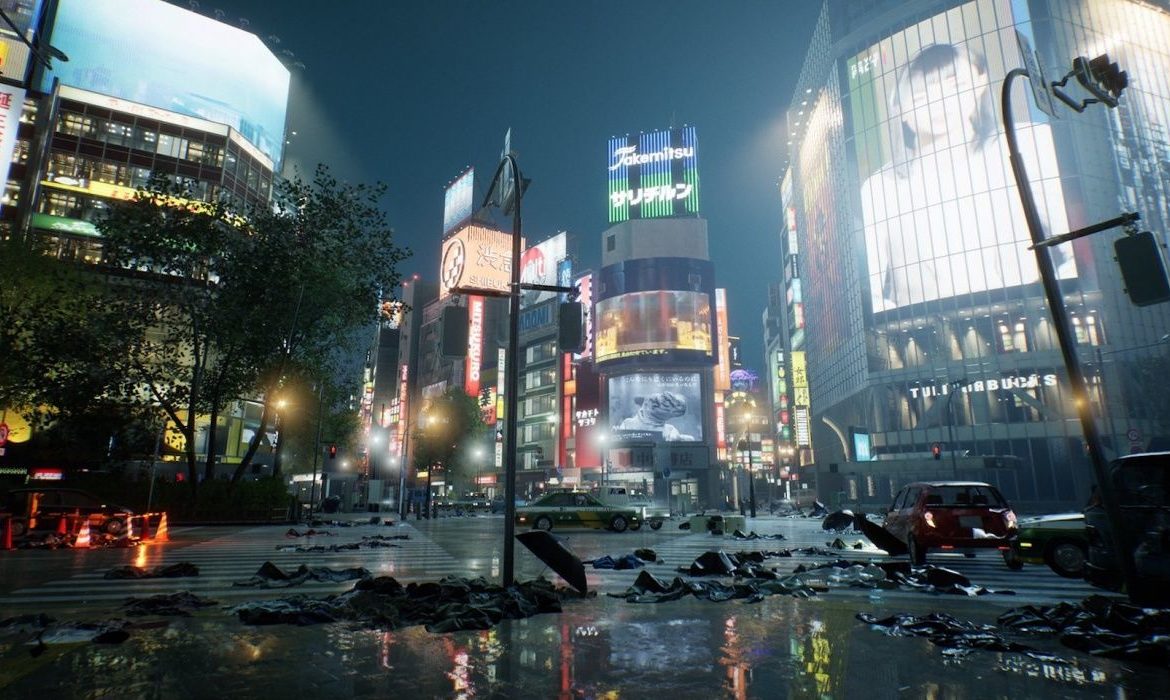
Bring On The Content
What saves Ghostwire’s map is the litany of things to find, collect and complete that are absolutely everywhere. Literally, it’s like someone grated side content and took “sprinkling” to mean “absolutely flood the damn thing”. The best part of all of this side content is that it also stacks alongside making Akito more powerful, providing a narrative AND gameplay benefit for engaging with it.
Jizo statues increase your available energy for each attack type (i.e more ammo), Torii gates reward you with prayer beads that provide passive buffs to abilities, finding missing Tanuki or other creatures allows you to gain Magatama which are used in upgrade trees and relics can be sold to kitty Yokai merchants for monetary rewards and other prize equipment.
Everywhere you go, you’ll also find the spirits of the inhabitants of Shibuya which have been unable to “pass on”, trapped in the city following the fog’s ascendance. To this end, you’ll be constantly utilising Katashiro to absorb these lost souls and taking them to telephones scattered across the city to aid their escape to the “other side”. The amount you absorb and pass on rewards you with money and XP (a seriously good amount of XP too) which allows you to level up frequently, gaining stronger upgrades and new abilities.
It creates a massively enjoyable feedback loop as it actively encourages you to be on the lookout for side-content and aids the narrative stakes of defining Atiko’s and KK’s development into being hero figures. Side-quests tie into this incredibly well too, with some thoughtful and earnest stories to uncover. By the end of my 15 hours to complete the story, I’d finished every side quest available, rescued about 100,000 of 240,000 souls and gathered about half of all collectibles, such is the wealth of content on offer.
In my time adventuring, I helped a child remove visions of an evil spirit lady who’d haunted the man that had donated his cornea’s to the boy. I reunited a lost child with their mum, resolved a curse of a building causing the suicide of all its tenants and aided a child piano prodigy play the song she so dearly loved but was cursed to never be able to play again. Using the idea of spirits being unable to pass on until their problem in the tangible world is resolved is an excellent narrative hook that justifies the existence of side-content while simultaneously giving them emotional stakes which have some meaning. Of course, it has the odd weird one, like passing toilet roll to a spirit stuck on the bog, but you can’t win them all, I guess.
It also seems the developers learnt from the mistakes of Fallout 76, where a world devoid of NPCs was widely derided as being barren. Ghostwire: Tokyo has the greatest answer to this: dogs and cats were immune and thus are roaming the streets. You can pet them, read their minds and even feed them. If you treat them, they’ll even dig you up money (out of concrete sometimes…) or help you out on a quest. This is game of the year content people. The Shibe dogs and Yokai cats are God’s gift to gaming so embrace them!

Shining A Spotlight On Japan
Ghostwire: Tokyo’s visuals have some real high points, mixed in with a couple of middling issues. While other titles like Horizon or Returnal have wowed many a player, Ghostwire is less of a technical showpiece, but has a level of lighting and atmosphere that oozes from this neon soaked city.
Wandering around the streets, you’ll notice an abundance of details, whether it be the advertisements for entertainment, the individual items contained in the various flats you’ll enter, the reflections from the puddles glowing with the hue of the surrounding billboards. For a city which has had all life completely vanish from existence, somehow Shibuya feels alive with the souls of those who inhabited it. Brimming with detail and nuance, it’s a delicately crafted location to explore.
At times, the lighting is absolutely stellar. When the rain is pouring, Visitors are flinging environmental objects at you, you’re blasting luminescent plumes of green through the darkness, Ghostwire can look phenomenal. Creative set-pieces will have your brain whirring to keep up with the sheer madness of what’s occurring in front of your eyes and the dark, broody atmosphere of some locales can be downright haunting.
Let’s not forget those enemy designs too, damn. Slenderman looking business dudes charging towards you armed with an eye-less void and black umbrella, headless school-children with high-pitched laughs, a crazed, towering woman complete in trenchcoat and terrifying bloody smile. Ghostwire has a multitude of awesome-come-horrific aesthetics, plus the look of Hannya and his inner circle is imposing to boot. If nothing else, seeing what other visual atrocity Ghostwire had in store for me was enough to keep me playing.
Even despite the creative direction however, some of the game looks… muted, in places. Interior locales repeat often. Much of the city, while beautifully lit and designed, looks very similar, creating a mash of repeating alleyways and streets you’ll come across a number of times. Textures and backdrops are also less impressive coming off the back of insanely high-production games like Dying Light 2 for example. Like I said, it’s not a technical or graphical marvel, but it looks superb for building atmosphere and a sense of place, which for me far outweighs its limitations in polygon numbers.
You can customise Atiko to look as ridiculous as you want too, and there’s always something to be said for that.

Welcome The Visitors
My only regret with Ghostwire: Tokyo is that in order to have this review available for today, I’ve had to play it non-stop for a day and a half. I wish I could have had the time to savour and appreciate every moment of this unique, creepy and amazing title. It has its flaws, don’t get me wrong, but it has such a charm to everything it nails that I was able to easily look past it’s business-as-usual open world design.
There’s an authenticity to how the developers have approached making this stellar game that you won’t really be able to appreciate without trying it out for yourself. I was able to learn what an Oni actually is, discover the careful means of the Kappa and be weirded out by the appearance of a Karakasa-Kozo. Ghostwire is a beautifully crafted letter to Japanese tales and folklore, handled with care and with such finesse I only wanted to see and know more of what the fog held in store.
I’ve taken a backseat to massive open world games recently, mainly due to their repetitious design and endless amounts of tedious busywork, but Ghostwire: Tokyo has given me a new-found source of appreciation that the genre can still inspire creative entertainment, even if it does tread well-worn design roads. I came for the premise of a wacky, scary and mysterious journey, but I stayed for the compelling story, flashy combat and for the tales that are unique only to Japanese folklore. Plus, you can pet ALL THE DOGS, not just one… what more do I need to tell you?
A smaller, more condensed open world hides the ethereal reality of a game which has a touching narrative, beautifully conceptualised neon Tokyo to explore and a wealth of folklore tales to weave your way through. Ghostwire: Tokyo stays true to the well-worn formula of open-world games, but the genuineness of its ideals make it a compelling and at times, other-worldly experience. Find the time for this next 2022 gem. It deserves it.

Ghostwire: Tokyo is launching on PS5 (review version) and PC on March 25th, 2022.
Developer: Tango Gameworks
Publisher: Bethesda
Disclaimer: In order to complete this review, we were provided with a promotional copy of the game. For our full review policy, please go here.
If you enjoyed this article or any more of our content, please consider our Patreon.
